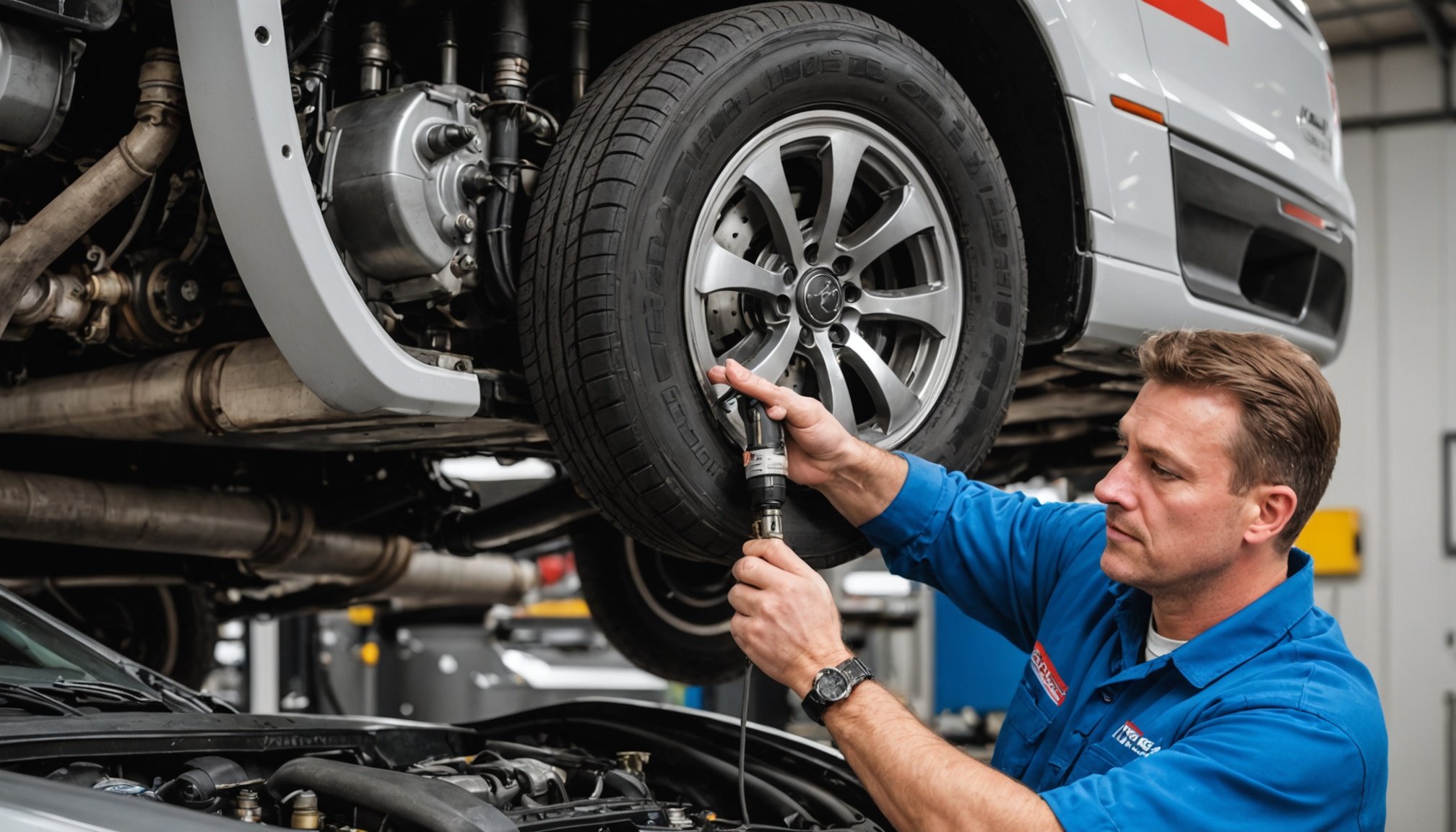Introduction to Differential Fluid
In the world of vehicle maintenance, understanding the role of differential fluid is crucial. This specialized fluid plays a vital role in lubricating the components within the differential system, which allows the wheels to rotate at different speeds without causing wear and tear. Proper vehicle maintenance requires keeping the fluid at optimal levels to ensure the longevity and performance of your vehicle.
Maintaining the correct level of differential fluid is essential as it affects the function of your car’s drive system. Insufficient fluid can lead to increased friction, noise, and ultimately, damage. Thus, regularly checking and maintaining the fluid level can prevent costly repairs in the future.
Also to discover : Vital strategies for safeguarding hybrid parts in uk cars: your comprehensive guide
In the UK, vehicles are equipped with complex differential systems tailored to various driving conditions and vehicle specifications. These systems might involve open, limited-slip, or torque-vectoring differentials, each requiring specific maintenance protocols. Familiarity with your vehicle’s differential system allows for more effective maintenance practices, ensuring your car runs efficiently and safely.
Understanding the function and necessity of differential fluid helps in prioritizing regular checks and timely replacements. By incorporating differential fluid maintenance into routine vehicle care, you enhance your vehicle’s performance and safety, ultimately extending its service life.
Also to read : Ultimate guide: proven tips to banish hard water stains from your car”s paintwork in the uk
Types of Differential Fluids
Choosing the correct differential fluid for your vehicle is essential for optimal performance. There are two primary categories: synthetic and conventional differential fluids. Synthetic differential fluids are engineered to provide superior stability, especially under extreme temperature conditions, offering longer-lasting performance. They are highly recommended for high-performance and newer vehicle models.
In contrast, conventional fluids, while generally more affordable, may not provide the same level of protection as synthetics, especially in harsh environments. It’s crucial to consider the fluid specifications specified by your vehicle manufacturer. This information is often found in the vehicle’s owner manual and can guide you in selecting the appropriate type.
When it comes to vehicle models, each may have different recommendations based on their specific differential systems. For instance, limited-slip differentials often require fluids with specific additives to reduce friction and ensure effective operation.
The decision between synthetic and conventional should also factor in your local climate and driving habits. Those who frequently engage in aggressive driving or live in areas with extreme temperatures may benefit more from synthetic options. Always consult your vehicle’s manual or a certified mechanic for precise recommendations tailored to your vehicle’s needs.
Inspecting Differential Fluid
Differential fluid inspection is a crucial aspect of vehicle maintenance. Regular checks ensure the fluid is neither low nor dirty, preserving the differential’s function and longevity. Recognising signs of low or dirty fluid is vital for maintaining your vehicle’s performance. Common indicators include unusual noises from the differential, vibrations while driving, or the vehicle’s refusal to move smoothly.
Signs of Low or Dirty Fluid
If your vehicle exhibits grinding noises or chattering during turns, these may signal insufficient or contaminated fluid. Monitoring for leaking spots under your vehicle can also provide early warnings of fluid issues.
Inspection Tools and Equipment
To perform a differential fluid inspection, several tools come in handy. A socket set, flashlight, and gloves are essential, facilitating access to and examination of the differential system. A clean rag is useful for wiping away excess fluid and dirt.
Step-by-Step Inspection Process
Begin by parking the vehicle on a level surface and securely raising it using a jack and stands. With appropriate safety gear, locate the differential cover or fluid drain plug. Carefully remove it to visually inspect the fluid’s colour and viscosity, indicating its condition. If the fluid appears burnt or excessively dirty, a fluid change might be necessary.
Replenishing Differential Fluid
Replenishing differential fluid is a crucial part of vehicle maintenance and ensures the smooth operation of your vehicle’s differential system. To maintain optimal performance, it’s recommended to replenish the fluid according to your vehicle manufacturer’s specified intervals, typically every 30,000 to 60,000 miles. However, frequent off-roading or towing might necessitate more regular changes.
Step-by-Step Guide to Fluid Replenishment
- Gather Tools: Basic tools like a wrench, fluid pump, and a catch pan are essential.
- Prepare the Vehicle: Park on a level surface and elevate the vehicle securely using jacks and stands.
- Locate and Remove the Drain Plug: Allow old fluid to fully drain into a pan.
- Check for Residue: Remove any metal shavings around the plug, indicating wear.
- Replace the Drain Plug: Ensure it’s tightened to prevent leaks.
- Refill with Correct Fluid: Using a pump, add the specified differential fluid until reaching optimal level.
- Re-check: Once the vehicle is lowered, re-check levels.
Common mistakes include not using the correct fluid type or improperly sealing the drain plug, leading to leaks. Consulting your vehicle’s manual helps to avoid these pitfalls.
Safety Precautions
When engaging in vehicle maintenance, prioritising safety is crucial. Ensuring you have the appropriate safety gear can make maintenance tasks safer and more effective. Essential items include safety goggles to protect your eyes, gloves to safeguard your hands from harsh fluids, and steel-toed boots for foot protection.
Car maintenance often requires working beneath vehicles, which can be hazardous. Best practices include always using jack stands along with a jack to securely elevate the vehicle. Never rely solely on a jack, as it could fail, posing a serious risk. Furthermore, ensure the vehicle is on a stable, flat surface to prevent rolling or shifting.
The proper disposal of used fluids is a critical aspect of vehicle maintenance. Differential fluid, like engine oil and other automotive fluids, should never be poured down drains or onto the ground, as this can harm the environment. Instead, collect used fluids in a secure container and deliver them to designated recycling centres. By following these precautions, you maintain safety and environmental responsibility.
Tools Needed for Differential Maintenance
Proper differential maintenance is essential for optimal vehicle performance. Having the right differential maintenance tools simplifies the process and ensures thorough servicing. Basic tools necessary for vehicle servicing include a socket set and a torque wrench to safely disassemble and reassemble components. A fluid pump is crucial for easy fluid refills, while a catch pan allows for clean fluid disposal.
Essential Tools Overview
- Socket Set & Torque Wrench: Necessary for tightening bolts to the manufacturer’s specifications.
- Fluid Pump & Catch Pan: Facilitates fluid changes without spillage.
Optional Tools for Advanced Users
For those looking to enhance their maintenance experience, consider investing in a pneumatic jack for ease of vehicle lifting. Additionally, a digital thermometer can help in assessing fluid temperature—crucial for precise maintenance.
Cost Considerations
Budgeting for tools is vital in vehicle servicing. While basic tools are often affordable, investing in quality, differential maintenance tools can reduce long-term costs by preventing frequent replacements. It’s advisable to check for deals or bundles to save money. Carefully evaluate the value and functionality of each tool to make informed purchasing decisions.
Visual Guides and Resources
Visual aids significantly enhance understanding and execution of vehicle maintenance tasks like inspecting and replenishing differential fluid. They provide clear, step-by-step guidance through diagrams and videos, illustrating complex procedures for various vehicle models.
Suggested Diagrams and Videos
Educational videos on platforms like YouTube offer practical insights into differential maintenance. Seek out tutorials authored by certified mechanics, ensuring the information is reliable and tailored to your specific fluid specifications.
Useful Manuals and Websites
Vehicle owner manuals are invaluable, providing precise fluid specifications necessary for your car’s differential system. For UK vehicle owners, websites such as the AA or RAC offer comprehensive advice on maintenance, troubleshooting, and locating local repair services.
Community Resources and Forums
Joining online forums or local car clubs connects you with like-minded individuals for shared experiences and advice. Websites like PistonHeads or specific car brand forums gather enthusiasts who exchange tips on car maintenance. Engaging with these communities offers access to a wealth of car care advice, empowering owners to confidently tackle vehicle maintenance challenges.
Additional Maintenance Tips
Regular vehicle maintenance routines are essential to ensure the health and longevity of your vehicle. Start by scheduling a routine inspection every six months to address potential issues promptly. During these inspections, focus on the engine, brakes, and especially the differential system. Early detection of problems can prevent costly repairs later.
Consulting a professional mechanic is highly recommended for an in-depth diagnosis. Professionals possess the expertise and tools necessary to handle complex systems and can provide tailored car care advice. This can include insights into your vehicle’s specific needs, beyond what’s found in standard maintenance guides.
To supplement your understanding, consider utilizing resources specific to the UK’s diverse climate and driving conditions. Websites such as the RAC and local forums offer valuable vehicle maintenance tips, often contributed by experienced vehicle owners. Engaging with these resources can deepen your knowledge and keep you updated on best practices.
Furthermore, for vehicles with specialised differential systems, additional maintenance can include checking fluid levels and ensuring correct fluid specifications. Regularly reviewing service manuals for manufacturer-specific guidelines is a proactive approach, reinforcing good practices for maintaining optimal vehicle health.








